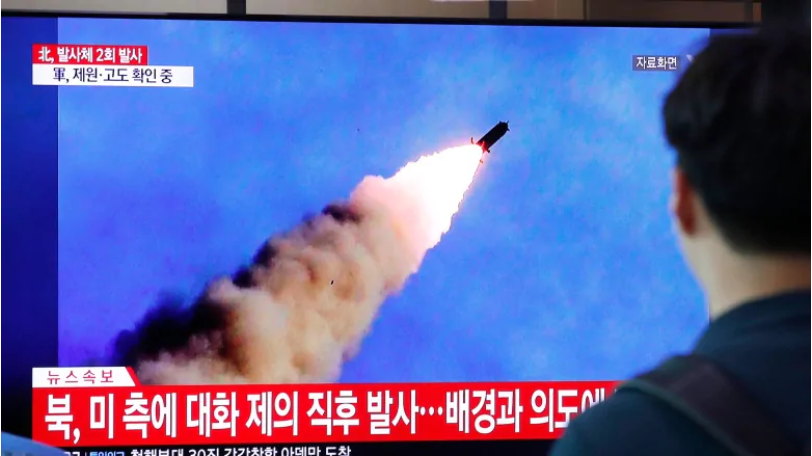
Defence expert says the frigates’ design shows Ottawa is keeping ‘the door open’ to BMD
Canada’s new frigates are being designed with ballistic missile defence in mind, even though successive federal governments have avoided taking part in the U.S. program.
When they slip into the water sometime in the mid- to late-2020s, the new warships probably won’t have the direct capability to shoot down incoming intercontinental rockets.
But the decisions made in their design allow them to be converted to that role, should the federal government ever change course.
The warships are based upon the British Type 26 layout and are about to hit the drawing board. Their radar has been chosen and selected missile launchers have been configured to make them easy and cost-effective to upgrade.
Vice-Admiral Art McDonald said the Lockheed Martin-built AN/SPY-7 radar system to be installed on the new frigates is cutting-edge. It’s also being used on land now by the U.S. and Japan for detecting ballistic missiles.
“It’s a great piece, and that is what we were looking for in terms of specification,” McDonald told CBC News in a year-end interview.

Selecting the radar system for the new frigates was seen as one of the more important decisions facing naval planners because it has to stay operational and relevant for decades to come — even as new military threats and technologies emerge.
McDonald said positive feedback from elsewhere in the defence industry convinced federal officials that they had made the right choice.
“Even from those that weren’t producing an advanced kind of radar, they said this is the capability you need,” he said.
The whole concept of ballistic missile defence (BMD) remains a politically touchy topic.
BMD — “Star Wars,” to its critics — lies at the centre of a policy debate the Liberal government has tried to avoid at all costs. In 2017, Canada chose not to join the BMD program. That reluctance to embrace BMD dates back to the political bruising Paul Martin’s Liberal government suffered in 2004-05, when the administration of then-U.S. president George W. Bush leaned heavily on Ottawa to join the program.
In the years since, both the House of Commons and Senate defence committees have recommended the federal government relent and sign on to BMD — mostly because of the emerging missile threat posed by rogue nations such as North Korea.
Liberals reluctant to talk BMD
The question of whether to join BMD is expected to form part of the deliberations surrounding the renewal of NORAD — an undertaking the Liberal government has acknowledged but not costed out as part of its 2017 defence policy.
Missile defence continues to be a highly fraught concept within the federal government. Defence Minister Harjit Sajjan made a point of downplaying a CBC News story last summer that revealed how the Canadian and U.S. militaries had laid down markers for what the new NORAD could look like, pending sign-off by both Washington and Ottawa.
Asked about Sajjan’s response, a former senior official in the minister’s office said it raised the spectre of “Star Wars” — not a topic the Liberal government was anxious to discuss ahead of last fall’s election.
The current government may not want to talk about it, but the Canadian navy and other NATO countries are grappling with the technology.
Practice makes perfect
Last spring, a Canadian patrol frigate, operating with 12 other alliance warships, tracked and shot down a supersonic target meant to simulate a ballistic missile. A French frigate also scored a separate hit.
For the last two years, NATO warships have practiced linking up electronically in defensive exercises to shoot down both mock ballistic and cruise missiles. A Canadian frigate in the 2017 iteration of the exercise destroyed a simulated cruise missile.

At the recent Halifax Security Forum, there was a lot of talk about the proliferation of missile technology. One defence expert told the forum Canadian military planners have been paying attention to the issue for a long time.
The frigate design is an important example.
“I think what they’ve tried to do is keep the door open by some of the decisions they’ve made, recognizing that missile proliferation is a significant concern,” said Dave Perry, of the Canadian Global Affairs Institute. “They haven’t shut the door on doing that and I think that is smart.”
Opponents of BMD, meanwhile, have long argued the fixation by the U.S. and NATO on ballistic missile defence is fuelling instability and giving Russia and China reasons to co-operate in air and missile defence.
Speaking before a Commons committee in 2017, Peggy Mason, president of the foreign and defence policy think-tank Rideau Institute, said the United States’s adversaries have concluded that building more offensive systems is cheaper than investing in defensive ones.
“The American BMD system also acts as a catalyst to nuclear weapons modernization, as Russia and China seek not only increased numbers of nuclear weapons but also increased manoeuvrability,” said Mason, Canada’s ambassador for disarmament from 1989 to 1994, testifying on Sept. 14, 2017.
She also warned that “there would be significant financial costs to Canadian participation” in the U.S. BMD program “given American demands” — even prior to Donald Trump’s presidency — “that allies pay their ‘fair share’ of the collective defence burden.”


